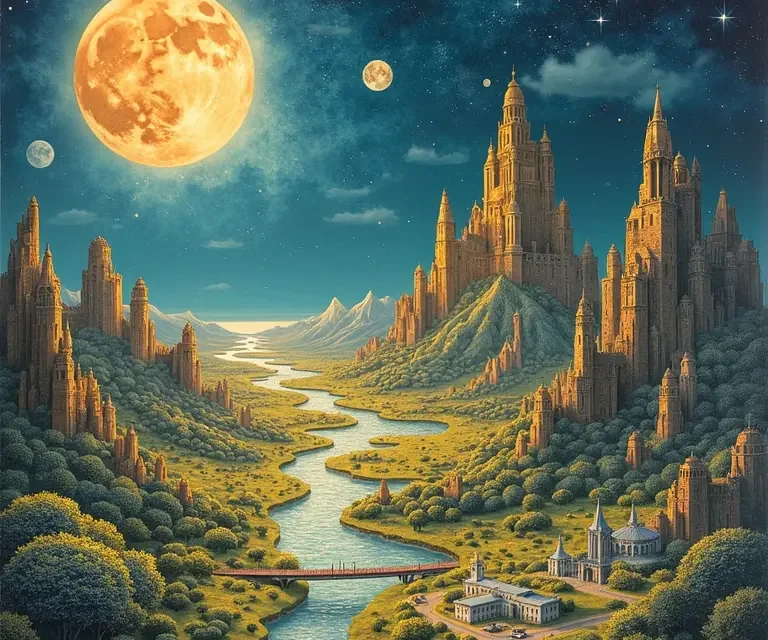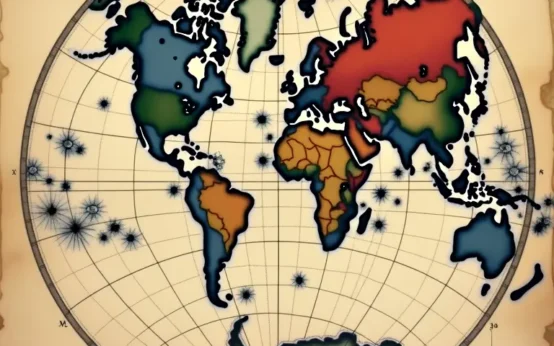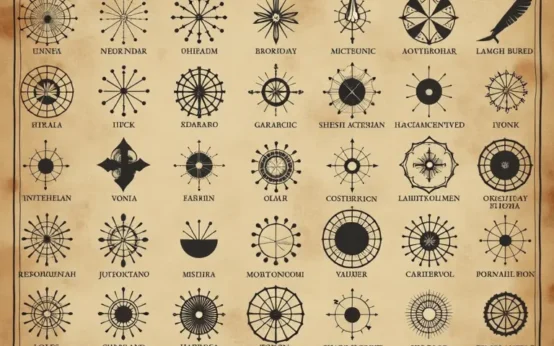Dreams. Those ephemeral, often bizarre, and intensely personal experiences that visit us nightly. For millennia, humans have sought to understand them – to decipher their meanings, to harness their power, and simply to understand why we dream. But beyond interpretation, a fascinating, and often overlooked, aspect of dream study is the place of dreams. Where do dreams happen? Not in a geographical sense, of course, but in the sense of the landscapes, the environments, the spaces constructed within our sleeping minds. This article will explore the curious cartography of dreams, examining how we construct these internal worlds, what influences their design, and how understanding these ‘dreamscapes’ might offer a new perspective on the nature of consciousness itself.
A History of Dream Mapping
The idea of mapping dreams isn’t new. Ancient civilizations, from the Egyptians to the Greeks, meticulously recorded dreams, often viewing them as visits to other realms or communications from deities. While not ‘maps’ in the modern sense, these records attempted to chart the recurring symbols, characters, and locations within dreams, seeking patterns and prophecies. Dream interpretation often involved associating specific locations within a dream with corresponding states of mind or future events. For example, a dream of a crumbling city might be interpreted as a sign of personal instability or societal upheaval.
However, the modern exploration of dream cartography began with the rise of psychoanalysis, particularly the work of Sigmund Freud and Carl Jung. Freud, while focused on the symbolic content of dreams, acknowledged the importance of the dream setting. He saw it as a representation of the dreamer’s internal landscape – a manifestation of repressed desires and anxieties. Jung, expanding on Freud’s ideas, proposed the concept of the ‘collective unconscious’ – a shared reservoir of archetypes and symbols that influence our dreams, creating recurring motifs and universal dreamscapes. Jung believed that certain dream locations, like forests, mountains, or oceans, held archetypal significance, representing different aspects of the psyche.
The Topography of the Dream World
What do dreams *look* like? While highly variable, certain patterns emerge. Researchers have noted a few common characteristics:
- Familiarity and Distortion: Dream locations are often based on real-world places – our homes, schools, workplaces, or childhood environments. However, these places are rarely exact replicas. They’re often distorted, rearranged, or combined in illogical ways. A familiar street might stretch endlessly, or a house might have rooms that don’t exist in reality.
- The ‘Impossible Space’: Dreams frequently violate the laws of physics and spatial coherence. We might find ourselves moving through walls, flying through the air, or teleporting instantly from one location to another. This ‘impossible space’ is a hallmark of the dream world, reflecting the loosening of rational constraints during sleep.
- Recurring Locations: Many people report recurring dream locations – a specific house, a particular forest, or a strange, undefined city. These recurring locations often hold personal significance, representing unresolved issues, emotional states, or archetypal themes.
- Emotional Landscapes: The emotional tone of a dream profoundly influences its landscape. A dream filled with anxiety might feature dark, claustrophobic spaces, while a dream of joy might unfold in bright, open meadows.
Consider the typical dream of being chased. Often, this unfolds not in a neutral environment, but in a maze-like landscape – winding corridors, dense forests, or a confusing network of streets. The environment isn’t merely a backdrop; it’s an active participant in the dream, amplifying the feeling of fear and helplessness. The geography *is* the anxiety.
The Neural Basis of Dream Landscapes
Neuroscience is beginning to unravel the brain mechanisms underlying dream construction. The hippocampus, a brain region crucial for spatial memory and navigation, plays a significant role. During sleep, the hippocampus reactivates memories of places, effectively ‘replaying’ our experiences of space. However, this replay isn’t a faithful reproduction. The prefrontal cortex, responsible for logical reasoning and spatial coherence, is less active during REM sleep (the stage of sleep most associated with vivid dreaming). This diminished prefrontal activity allows for the distortions, impossible spaces, and illogical arrangements that characterize dream landscapes.
Furthermore, the parahippocampal place area (PPA), a region specifically involved in processing spatial layouts, is highly active during dreaming. This suggests that the brain actively constructs visual representations of places, even in the absence of external stimuli. The PPA isn’t simply recalling existing memories; it’s building new environments, combining elements from different memories, and creating entirely novel spaces. This process is influenced by our emotions, memories, and expectations.
Interestingly, research suggests that individuals with damage to the hippocampus often experience dreams with less defined spatial structure. Their dreams may be more fragmented, less coherent, and lacking in a clear sense of place. This further supports the link between the hippocampus and the construction of dream landscapes.
Influences on Dream Cartography
What shapes the landscapes of our dreams? Several factors contribute:
- Personal Experiences: Our waking-life experiences, particularly those involving strong emotional responses, are frequently incorporated into our dreams. Places we’ve visited, homes we’ve lived in, and environments that evoke strong feelings are likely to appear in our dreamscapes.
- Cultural Influences: Our cultural background influences our perceptions of space and place. Different cultures have different architectural styles, urban layouts, and symbolic associations with certain landscapes. These cultural influences seep into our dreams, shaping the environments we create. For a deeper dive into how cultural interpretations affect dreams, see The Surprisingly Consistent Science of Dream Interpretation Across Cultures.
- Media and Imagination: Books, movies, video games, and other forms of media can provide us with ready-made dream landscapes. We might dream of fictional worlds, fantastical cities, or scenes from our favorite stories.
- Emotional State: As mentioned earlier, our emotional state profoundly influences the tone and structure of our dreamscapes. Anxiety, fear, joy, and sadness all manifest in the environments we create.
- Archetypes and Symbols: Jungian psychology suggests that certain dream landscapes are archetypal – representing universal patterns of the human psyche. Forests might symbolize the unconscious, mountains might represent challenges, and water might symbolize emotions.
Dream Mapping Techniques
Can we actively map our dream landscapes? Several techniques can help:
- Dream Journaling: Regularly recording your dreams, with a focus on the settings and locations, is the most fundamental technique. Pay attention to details – the architecture, the landscape, the atmosphere.
- Dream Sketching: Visualizing and sketching your dream landscapes can help you remember details and identify recurring patterns.
- Lucid Dreaming: Becoming aware that you’re dreaming while still in the dream state allows you to consciously explore and manipulate the dream environment. You can deliberately alter the landscape, investigate specific locations, and interact with the dream world.
- Dream Re-entry: Upon waking from a particularly vivid dream, try to immediately re-enter the dream state by closing your eyes and focusing on the dream landscape. This can help you solidify the memory and explore the dream further.
The Philosophical Implications of Dream Cartography
The study of dream cartography raises profound philosophical questions about the nature of reality, consciousness, and the self. If we can create entire worlds within our minds, what does that say about the nature of reality? Are our waking experiences fundamentally different from our dream experiences, or are they simply different states of consciousness?
The ability to construct complex and coherent dream landscapes suggests that the brain possesses a remarkable capacity for world-building. This capacity may be rooted in our evolutionary history, perhaps serving a purpose in simulating potential threats and opportunities. The ability to mentally rehearse scenarios in a safe environment could have provided a survival advantage.
Furthermore, the study of dream landscapes sheds light on the relationship between the mind and the body. Our dreams are not simply abstract mental phenomena; they are deeply rooted in our neurobiology, our emotions, and our personal experiences. Understanding how the brain constructs dream worlds can provide insights into the neural basis of consciousness and the subjective experience of reality.
The intricate mechanisms and history of world-building in dreams parallels the human fascination with creating complex systems in the waking world. From the earliest celestial observations to the most complex clockwork mechanisms, humans have always sought to map and understand the world around them. For a look into the historical development of mechanical world-modeling, see The Curious Chronicle of Celestial Mechanics Beyond Clockwork, or explore the history of automatons here, here, and here.
Beyond Interpretation: The Potential of Dream Mapping
Traditionally, dream analysis has focused on interpreting the *meaning* of dreams. However, dream mapping offers a different approach – one that emphasizes the *structure* and *organization* of the dream world. By mapping our dream landscapes, we can gain a deeper understanding of our internal cognitive processes, our emotional states, and our subconscious patterns.
This approach has potential applications in several areas:
- Therapy: Dream mapping can be used as a therapeutic tool to help individuals explore and resolve emotional issues. By visualizing and analyzing their dream landscapes, patients can gain insights into their subconscious conflicts and develop coping mechanisms.
- Creativity: Dream landscapes can serve as a source of inspiration for artists, writers, and designers. The surreal and illogical nature of dream environments can spark new ideas and perspectives.
- Self-Discovery: Mapping our dream landscapes can be a powerful tool for self-discovery, helping us to understand our deepest fears, desires, and motivations.
Ultimately, the curious cartography of dreams is a testament to the boundless creativity and complexity of the human mind. By exploring the landscapes of our sleep, we can unlock new insights into the nature of consciousness and the mysteries of the self.


 The Surprisingly Consistent Science of Early Map Projections: Distorting the World to Understand It
The Surprisingly Consistent Science of Early Map Projections: Distorting the World to Understand It  The Unexpectedly Consistent Principles of Early Map Legends – Decoding the Symbols of Exploration
The Unexpectedly Consistent Principles of Early Map Legends – Decoding the Symbols of Exploration  The Forgotten Art of Cartography: How Mapmaking Shaped Our Worldview
The Forgotten Art of Cartography: How Mapmaking Shaped Our Worldview